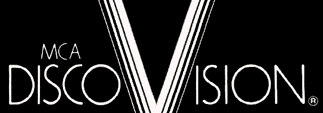
Mastering Guide

In the current LaserDisc market, almost all discs are mastered correctly. While some are missing things such as Table of Contents, on the consumer level, we do not see genuine errors in mastering. There is the occasional recall due to incorrect 3/2 pull-down mastering, reversed stereo channels, or out of sync Dolby Digital audio. These types of errors have been around from the very beginning.
However, DiscoVision had it much worse. Mastering errors such as those above were never corrected. Errors ran the gamut from incorrectly encoding chapters, errors in the 3/2 pull-down for film, incorrect frame numbering, phase errors in the audio, Not every disc will have these errors. Due to remastering, only some copies of discs will exhibit these errors.
This list will detail the errors in mastering which have been observed over the years. The names for these errors
may be called other things to other individuals, but these are the terms I've used from the beginning of time.
Phantom Chapters:
This mastering error is fairly common. Some discs will report chapter encoding when played on some players. This
is manifest by having the chapter indicator appear when doing a display function or search function. Not all players
will display this error, so the same disc may appear correctly coded on some players. The error is that there are
actually no chapter stops anywhere on the side.
Missing Chapters:
The reverse of Phantom Chapters is Missing Chapters. Discs which are supposed to have chapter stops in the
program, but they fail to register in the player. This defect is always associated in the players ability to "see"
the chapter encoding. It will vary from player to player. For example, the Pioneer CLD-D703
will often ignore chapter indicators on side 1, while the Pioneer LD-W1 will
always catch them. This is more than likely the odd way DiscoVision encoded frame 0, assigning the same frame number
to several hundred frames at the beginning of a side.
Vague Chapters:
The other typical Chapter stop related mastering error is vague chapter placement. While discs produced today have
chapter stops placed in very well defined specific (and often too frequent) places in the film, DiscoVision chapters
tend to be encoded somewhere within 20-500 frames of the actual location they should be. The main reason for this was
players of the time did not have direct search ability for chapter stops. To get to a chapter stop, you activated the
chapter indicator and then pressed the scan button until the number displayed what you were looking for. Since this
process is far from precise, accurate placement was unnecessary. I guess they never thought about having the discs
played in players made 18 years later...
Auto Stop:
From time to time, a DiscoVision mastering technician would let his finger slip and hit an automatic picture stop
code by mistake. Discs which have this error will simply stop playing in the middle of a program. By simply pressing
Play, the program will continue. This was generally not seen as a problem since the Pioneer VP-1000
was the only consumer unit which recognized auto stop codes, and the frame display had to be enabled for the
functionality to work. However, every player built since 1983 has this functionality built in and it cannot be
disabled. The grossest example of this error is Frenzy Side 5 which has a
picture stop encoded at every playable frame of the side.
20 Frame Skip:
A term I have coined, 20 frame skip is a pattern where every several hundred frames, the frame counter skips
20 frames. The pattern is 400 frames, skip 20, 400 more frames, skip 20, 600 frames, skip 20, 200 frames, skip 20. At
this point process repeats for the duration of the side. The end result is a frame count which increments 80 frames
per minute faster than it should. There is no visible difference in the picture. However, this affects the players
ability to search. For example, on a feature film, there is no frame 30,000. The frame counter skips from frame
29,999 to 30,020. If searching for frame 30,000, some players will choke and eventually give up and come out of search
somewhere in the near vicinity, others figure it out pretty well and simply search to the closest possible frame.
Discs which have this problem are always mastered from a film source.
10,000 Frame Shift:
Another of my coined terms, the 10,000 frame shift is a unique pattern where the frame counter increments
incorrectly when rolling over the 10,000 frame marks (ie, 10,000, 20,000, 30,000, etc.). What occurs is rather than
progressing from frame 9,899 to 9,900, the frame count jumps to 19,900. From here, it then proceeds normally to 19,999
where it then jumps back to frame 10,000. The frame counter then progresses as expected until frame 19,899 where the
process repeats with the new frame numbers. In a nutshell, the ten-thousandths place is keyed to increment off the
hundredths place rather than the thousandths place. Searches on discs with this error confuse the processor inside
the player when requesting frames near this pattern. Most simply cannot understand why the frame numbers are out of
sequence. To make matters worse in terms of searching, there are no frame numbers which equal 9,900 - 9,999, but
there may be frames 39,900 - 39,999 on a disc which may only have 36,000 frames to begin with.